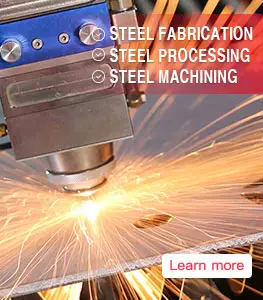Welcome to BBN Steel Materials Factory
40cr alloy steel heat treatment
GB 40Cr steel is a type of alloy steel which is widely used in the manufacturing of machine parts and equipment due to its high strength, toughness, and resilience. Heat treatment is an essential process in the manufacturing industry for 40Cr alloy steels to enhance their properties. we will be discussing the heat treatment process of 40Cr alloy steel.
Heat Treatment Steps:
40Cr alloy steel can undergo several heat treatment processes which can lead to different microstructures and properties. The steps involved in the heat treatment of 40Cr alloy steel are:
1. Annealing
Annealing is the process of heating the steel to a specific temperature and holding it there for a certain amount of time, then cooling it slowly to room temperature. The purpose of annealing is to reduce stress and improve the steel's ductility. In the case of 40Cr alloy steel, the temperature range for annealing is between 790°C to 810°C. The holding time is around two to three hours, and cooling is done in the furnace itself.
2. Normalizing
Normalizing is the process of heating the steel to a specific temperature and holding it there for a certain amount of time, then cooling it in still air. The purpose of normalizing is to reduce the steel's hardness and improve its machinability. The temperature range for normalizing 40Cr alloy steel is between 850°C to 880°C. The holding time is around two to three hours, and cooling is done in still air.
3. Quenching
Quenching is the process of rapidly cooling the steel from a high temperature to room temperature by immersing it in a liquid medium, usually oil or water. The purpose of quenching is to increase the steel's hardness and toughness. In the case of 40Cr alloy steel, the quenching temperature range is between 830°C to 860°C. The holding time is around two to three hours, and the cooling medium is oil.
4. Tempering
Tempering is the process of reheating the quenched steel to a specific temperature and holding it there for a certain amount of time, then cooling it in still air. The purpose of tempering is to reduce the steel's brittleness and improve its ductility and toughness. In the case of 40Cr alloy steel, the tempering temperature range is between 520°C to 580°C. The holding time is around one to two hours, and cooling is done in still air.
Microstructures and Properties:
The microstructure and properties of 40Cr alloy steel after heat treatment depend on the heat treatment process used. Below is a summary of the microstructures and properties of 40Cr alloy steel after each heat treatment process:
1. Annealing:
The microstructure of 40Cr alloy steel after annealing is a ferrite and pearlite mixed structure. The hardness of annealed 40Cr alloy steel is relatively low, around 160 HB. The tensile strength of annealed 40Cr alloy steel is around 550 MPa, and the yield strength is around 275 MPa.
2. Normalizing:
The microstructure of 40Cr alloy structural steel after normalizing is a fine-grained pearlite mixed with a small amount of ferrite. The hardness of normalized 40Cr alloy steel is higher than that of annealed 40Cr alloy steel, around 190 HB. The tensile strength of normalized 40Cr alloy steel is around 600 MPa, and the yield strength is around 320 MPa.
3. Quenching:
The microstructure of 40Cr alloy steel after quenching is a martensitic structure. The hardness of quenched 40Cr alloy steel is the highest among all the heat treatment processes, around 220 HB. The tensile strength of quenched 40Cr alloy steel is around 1000 MPa, and the yield strength is around 800 MPa.
4. Tempering:
The microstructure of 40Cr alloy steel after tempering is tempered martensite. The hardness of tempered 40Cr alloy steel is lower than that of quenched 40Cr alloy steel, around 200 HB. The tensile strength of tempered 40Cr alloy steel is around 800 MPa, and the yield strength is around 500 MPa.
Heat treatment plays a crucial role in enhancing the material properties of 40Cr alloy structural steel. Depending on the heat treatment process used, the microstructure and properties of 40Cr alloy steel vary. Annealing and normalizing reduce the steel's hardness and improve its ductility, while quenching increases the steel's hardness and toughness. Tempering reduces the steel's brittleness and improves its ductility and toughness. Understanding the heat treatment process and its effects on 40Cr alloy steel is essential in selecting the right material for specific applications.
.webp)
.webp)
.webp)
.webp)
.webp)
.webp)
.webp)
.webp)
.webp)



Leave a Message